Melbourne’s $15.5bn Metro Tunnel explained: How it will work, what it will do and how it will affect your commute
The $15.5bn dollar Metro Tunnel is set to completely transform Melbourne’s transport network when it opens at the end of the year. Here’s a three-minute guide on what it means for your commute.
Victoria
Don't miss out on the headlines from Victoria. Followed categories will be added to My News.
Melbourne is just months away from welcoming the biggest shake-up to the city’s transport network in four decades — the long-awaited Metro Tunnel.
It’s been nine years since former premier Daniel Andrews threw his support behind the rail project, which was initially projected to cost $11bn.
Since then, the Metro Tunnel has never been far from the headlines as major upgrades were silently cut to manage budget pressures and “ghost shift” scams paid workers when they hadn’t shown up to their job at all.
The price tag was last year revealed to have hurtled past $15.5bn.
It forced Premier Jacinta Allan to concede that fresh contract negotiations would come as a hit to taxpayers, who will cough up $13.48bn toward to project.
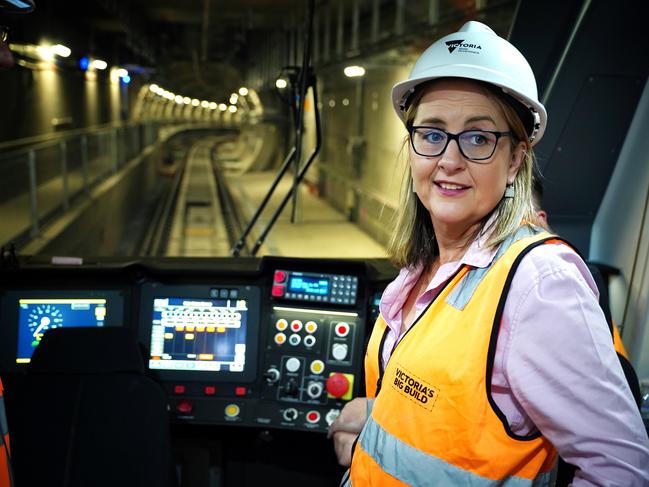
So, will it really be worth it?
Despite every hurdle, transport experts are still certain the project will revolutionise Melbourne’s rail network once it opens at the end of this year.
Here’s how it will work.
What is the Metro Tunnel?
The Metro Tunnel is a new rail track connecting Melbourne’s west and southeast.
Twin 9km tunnels have been dug running from South Kensington, directly through Melbourne’s CBD and exiting at South Yarra.
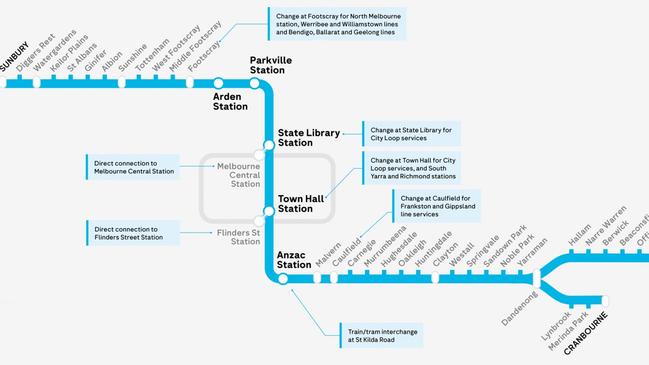
These tunnels are serviced by five new stations:
– Arden Station in North Melbourne
– Parkville Station near Melbourne University
– State Library Station near Melbourne Central Station
– Town Hall Station directly across from Flinders Street Station
– Anzac Station under St Kilda Rd
Understanding our current system: The City Loop
Melbourne’s City Loop was completed in 1985, opening in stages between 1981 and 1985 to take pressure off the very busy Flinders Street and Southern Cross stations and provide commuters with a more efficient way to get around the CBD.
The 40-year-old loop isn’t just one tunnel, but four separate underground tunnels that run through Flagstaff, Melbourne Central and Parliament stations.
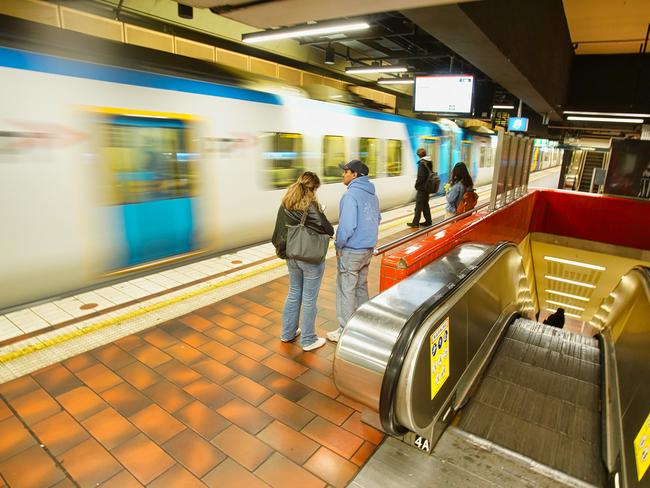
These join up with the Flinders Street Viaduct — the above-ground bridge between Southern Cross and Flinders Street stations — to form a “loop” around Melbourne’s CBD.
As convenient as the City Loop is, the infrastructure is struggling under the strain of Melbourne’s rapid population growth.
Firstly, we’re close to capacity
There’s a limit to the number of trains you can run through the City Loop, meaning increasing capacity isn’t as simple as adding more services, Public Transport User Association’s Daniel Bowen explained.
“In terms of number of trains, we’ve got the four City Loop tunnels and most of them are at or near capacity, which is roughly 20 trains per hour,” he said.
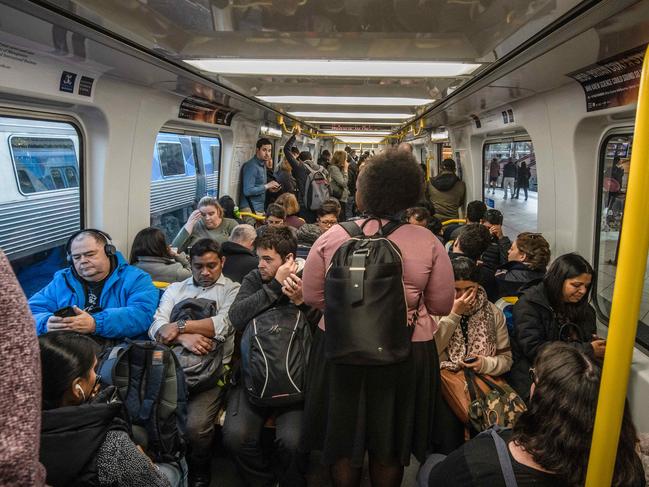
The majority of our metro train lines share City Loop tracks — and each of the four tunnels have just a single track, which can only be used in one direction at a time.
In Northern tunnel, trains from the Craigieburn, Upfield and Sunbury line are all being forced to share one of the single track tunnels and follow each other around the City Loop.
It means even if a train is running on time, they can be delayed as they wait in line to enter the CBD.
“If you’ve got 15 metro lines all converging in the city, they can’t all share those four tracks,” Mr Bowen said.
“Adding more capacity in the centre of the city is obviously vital.”
It’s a major issue for Melbourne commuters as patronage levels make their return to pre-pandemic levels.
One issue, everything stops
Because most lines have to use the City Loop, a major portion of Melbourne’s network is forced to halt when there is an emergency at any major station.
Just last month, all City Loop-bound trains had to be called to a stop after a fire scare at Melbourne Central Station, which was later deemed a false alarm.
It resulted in peak-hour delays of up to 50 minutes.
The same thing happens when there are signalling faults, power issues or a trespasser on the tracks.
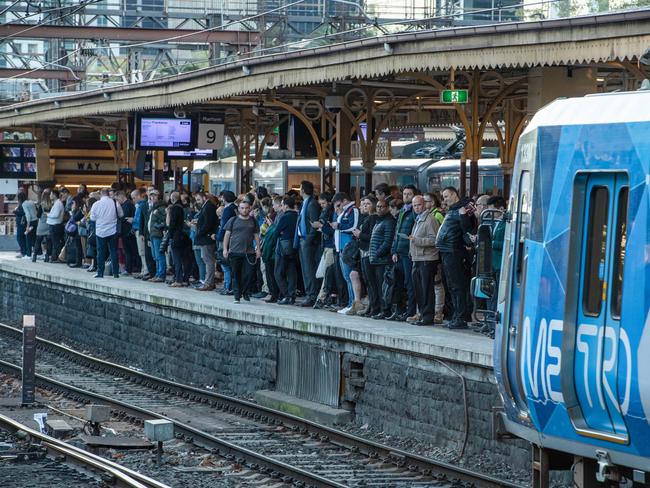
We’re not keeping our trains full
Imagine you’re heading into the city on the Craigieburn line with carriages full of inbound passengers.
Commuters jump off the train at North Melbourne, then Flagstaff, Melbourne Central and Parliament stations.
By the time you reach Flinders Street Station, your train is pretty much empty.
Yet, other trains full of passengers could still be sitting at North Melbourne, waiting for the all clear to enter the tunnel.
Back in 2012, Public Transport Victoria slammed the City Loop set-up a “sub-optimal use of trains and infrastructure”.
It even acknowledged the current design was a “waste of valuable central area track capacity”.
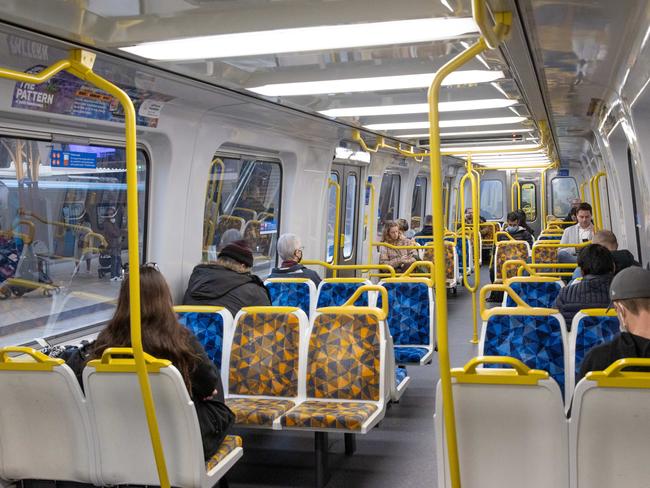
How will the Metro Tunnel help solve efficiency issues?
Giving back vital City Loop capacity
The Metro Tunnel will move two of the busiest lines — the Sunbury and Cranbourne/Pakenham lines — out of the City Loop and link them together via the Metro Tunnel.
These trains will run from Sunbury, through the Metro Tunnel, and then out toward Cranbourne, before heading back again.
This move will leave the Caulfield Tunnel on the City Loop completely empty — freeing up vital space on the City Loop for additional services.
But the bigger benefit, Mr Bowen said, will come to the trains in the Northern Loop tunnel – the Sunbury, Craigieburn and Upfield lines.
During peak-hour, about 10 Sunbury trains, 10 Craigieburn and three Upfield lines run through the Northern Tunnel.
Moving the Sunbury line out of the City Loop will make room for more Craigieburn and Upfield services.
“It’s basically saying half of those trains come out of the Northern Loop tunnel – it really does free up a lot of space,” Mr Bowen said.

Our busiest lines independent of the City Loop
The Metro Tunnel has been built completely independently of the City Loop.
It means the busiest lines headed toward Dandenong won’t be forced to stop running in the case of an emergency in the Loop.
“If there’s an issue like (a trespasser on the line), the whole CBD rail system doesn’t just shut down,” Mr Bowen said.
“The Metro Tunnel being isolated with no connection in the city to the other lines can keep running.”
Sets Melbourne up to better use our trains
While the Metro Tunnel won’t fully solve our poor use of existing infrastructure, it will provide the initial framework for further upgrades by giving Melbourne another option to the City Loop.
Transport bodies now have the option to link more lines up to each other to send fewer empty trains through the loop.
This is a whole separate proposed project — the City Loop Reconfiguration (CLR).

Why did we pay for new stations in the CBD?
The Andrews-Allan government decision to build new stations so close to others on the City Loop has copped fierce backlash.
Why build Town Hall and State Library stations, when we already have Melbourne Central and Flinders Street Stations within walking distance from them?
“If you’re moving some lines out of the loop to their own tunnel, you still need to have stations in the CBD where people can hop on and off,” Mr Bowen answered.
“There’ll be an interchange there, so people can easily change trains to and from the new tunnel, as well as obviously being busy stations in their own right.”
In original plans, these stations were called “extensions” of the existing nearby stations.
Sticking with this terminology could have saved the government widespread ridicule.
“They’re providing two new stations, but they’re really in a way extensions of Flinders Street and Melbourne Central stations,” Mr Bowen said.
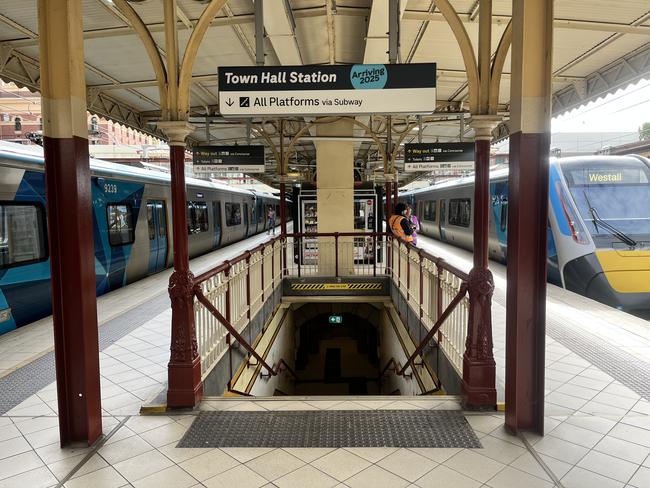

Why don’t the old trains fit in the Metro Tunnel?
Late last year, shadow minister for Public Transport Matthew Guy sensationally claimed that the Allan government had made a “major stuff-up” to the Metro Tunnel.
“Five out of six Melbourne trains will be unable to use the new Metro Tunnel,” he said in November.
But, there are a few reasons only one type of train has been certified to run through the tunnel.
Firstly, the new trains are not going to run like traditional trains.
In the City Loop, drivers keep a lookout for line-side signals — the equivalent of our traffic lights.
Instead of drivers looking out for line-side signals, the newer High-Capacity trains will use in-cab signalling.
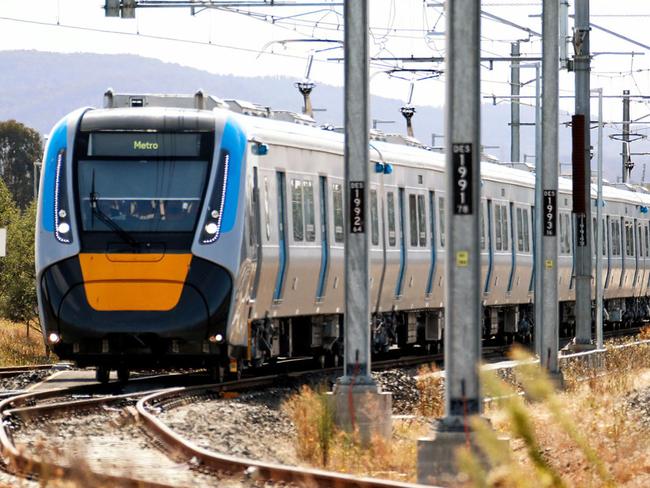
This will allow trains to safely run closer together, allowing services to run every two minutes.
“Instead of the drivers having to watch out for signals that are in the tunnels, they’ll get information directly onto the console in the cab that tells them how fast they can go,” Mr Bowen explained.
Imagine the train in front of yours is delayed at the station ahead.
Under the current system, the driver of your train would also be told to stop hundreds of metres away.
But with the new in-cab signalling, your train will be allowed to continue moving forward and get much closer to the train in front — saving you vital time on your journey.
“Now, they’ve got the in-cab signalling, which means as soon as one train moves off the platform, the next train can kind of roll in,” Mr Bowen said.
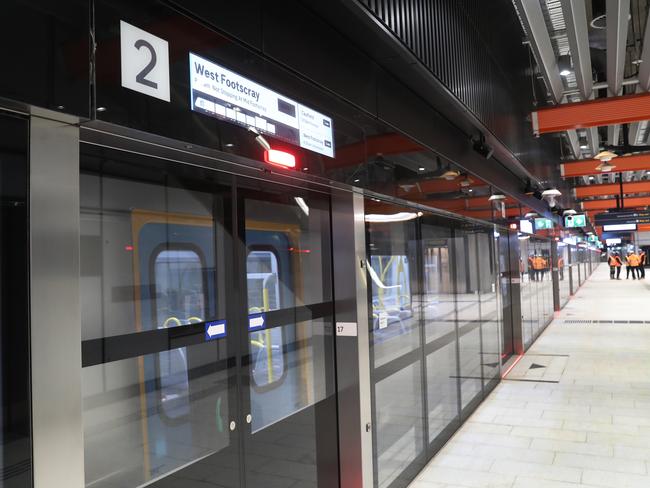
As well as this, there are new platform screen doors at the new Metro Tunnel stations.
The new train doors align with doors at every platform, which only open when a train comes to a complete stop — something trains on our older fleet wouldn’t be able to do.
“It’s a really good safety measure, it prevents people from falling onto the tracks, it reduces the amount of wind coming through as the trains arrive and it helps speed up operations and improves safety and reliability,” Mr Bowen said.
When will the Metro Tunnel open?
Works were meant to be completed by September 2024 for the tunnel to open in early 2025.
But under revised schedules, the completion date was pushed back to June 2025, with a grand opening by New Year’s Eve.
Still, the revised rollout aligns with the Andrews-Allan government’s initial promises to open the tunnel by 2026.
But, there is a catch
In order for commuters to get the most out of the Metro Tunnel, the Allan government must invest in effectively using the state’s train fleet to deliver more services, Mr Bowen said.
“We only see the benefits to passengers if (the government) then back (the project) up with enough investment in the timetables that there’s a frequent service all day, every day, like you see in other big cities,” he said.

Mr Bowen said in other major cities, the longest commuters have to wait for a train is 10 minutes — in Melbourne, it can be 30 to 40 minutes.
“To maximise the returns for the investment they really need to commit to frequent all day service every day, like you see in every other city,” Mr Bowen said.
“Outside of peak-hour, most trains are just in the depot doing nothing.”
There are a number of additional works on the network that if constructed, would further boost the benefits of the Metro Tunnel.
Many of these were originally proposed as part of the $15.5bn project, but were cut due to budget pressures.
How will the Metro Tunnel change my commute?
A Metro Tunnel spokesperson said the new link would “completely change the way Victorians move around our city and will free up capacity in the City Loop to run more trains more often across more lines.”
But not everyone will see major benefits.
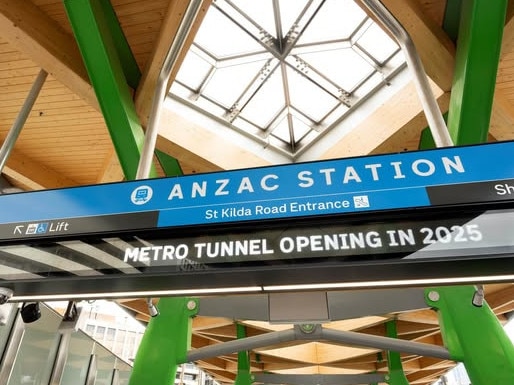
Sunbury: Your train will now run through the Metro Tunnel and not Parliament, Flagstaff or Southern Cross. To access City Loop stations, you will need to change trains at State Library and take another train from the adjoining Melbourne Central Station, or swap at Town Hall and take a train from adjoining Flinders Street Station.
Cranbourne and Pakenham: Your train will also now run through the Metro Tunnel and not the City Loop, linking through to Sunbury. You will also need to switch lines to access City Loop stations.
Craigieburn and Upfield: Nothing changes in terms of your route, however, your train won’t be sharing the Northern Loop Tunnel with the very busy Sunbury line once the Metro Tunnel opens. This means there will be room for additional services to run through the tunnel, potentially meaning more trains, more frequently, if the Allan government uses this free space.
Frankston: Your train will now run directly through the City Loop, rather than heading out to Werribee/Williamstown from Southern Cross. There will be no need to swap services in order to reach City Loop stations. You will also be able to swap at Caulfield on your way into the city to access the Metro Tunnel, which can take you to Sunbury, and hopefully one day out to the Airport.
Sandringham: Currently, your train terminates at Flinders Street Station. Once the Metro Tunnel opens, the Sandringham line will continue running from Flinders Street Station all the way to Werribee/Williamstown before returning again.
Werribee/Williamstown: Your train will no longer run through to Frankston, but instead through to Sandringham.
For those on V/Line from Seymour, Shepparton, Albury: There will be no change to your commute, however, you are the only commuters who will have to make two train changes in order to travel the Metro Tunnel. Every other commuter on the network in theory should be able to make just one train change to swap between the City Loop and Metro Tunnel services.
Every other line: There is no change or major benefit of the Metro Tunnel to your commute.
In the city: For those at Melbourne University and nearby hospitals, the new Parkville station will come as a major win and save you having to use already jam-packed trams.
The tunnel itself will take pressure off the Swanston St and St Kilda Rd tram corridor.
Anzac similarly will provide a convenient interchange with St Kilda Rd trams.




